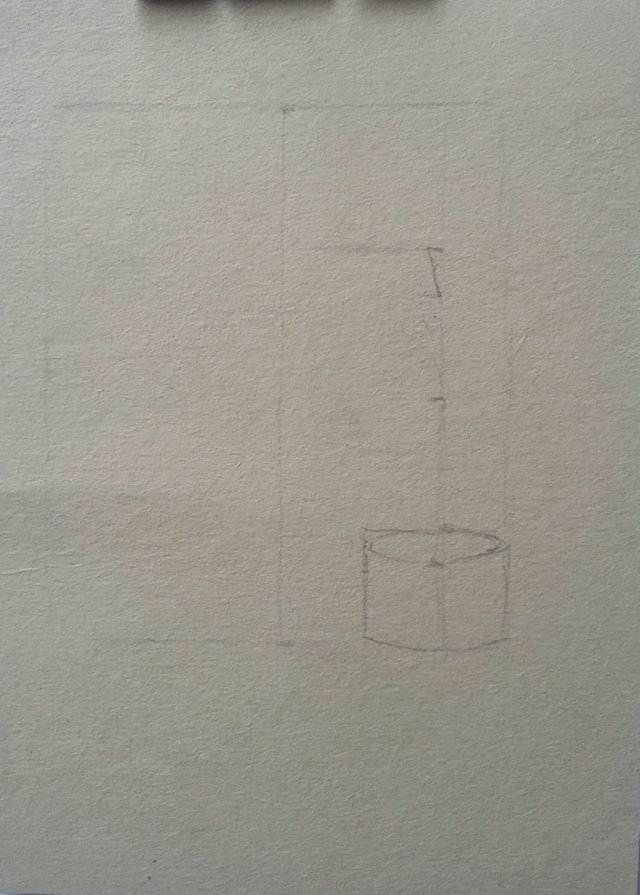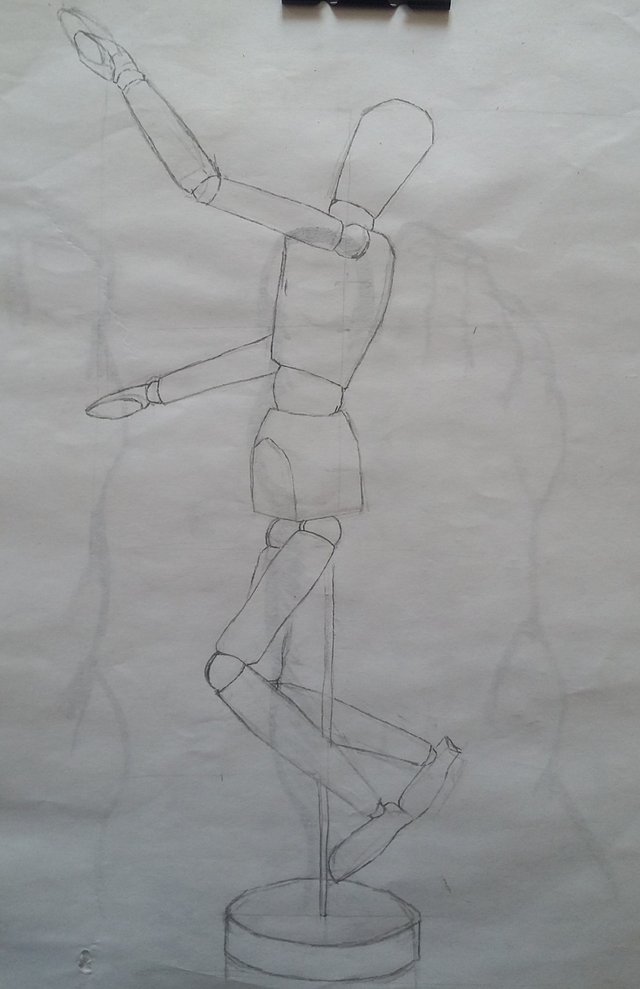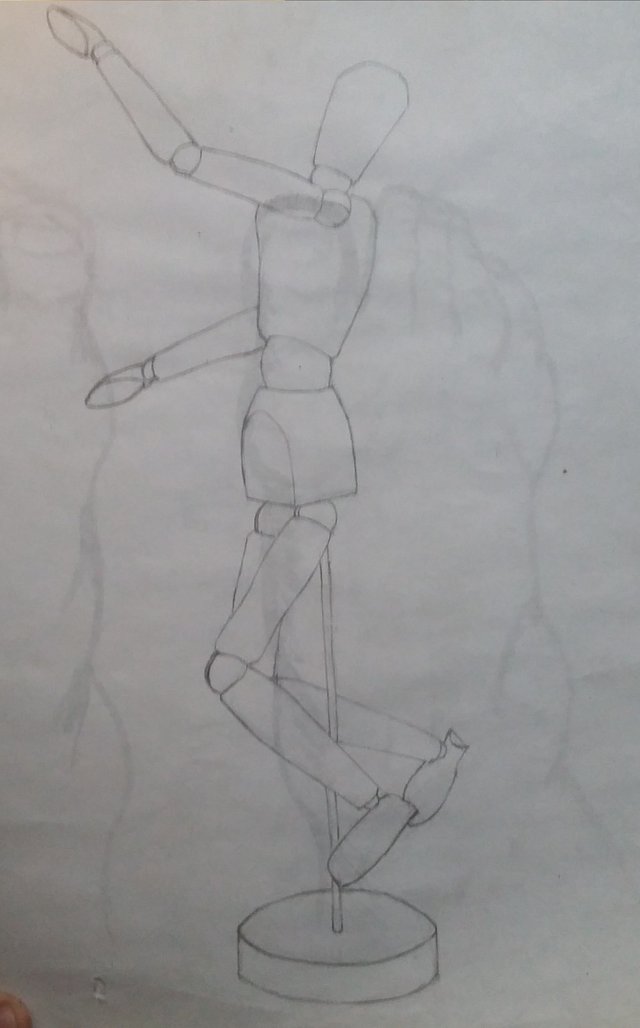Drawings and thoughts... A summary

After a little while without publising I´m back with a summary of drawings and thoughts, ideas around the simple act of taking a pen and a piece of paper and start to move through it, representing the reality, our dreams and emotions in the most diversed ways to do it, focusing this time with a naturalistic/Academic perspective and its potential.
I will show to you part of the process involve around the drawing, my methods, subjects and goals.

Technique, process and methods
My drawing perspective it is never been a steady one, it never had an end line to reach, then suddenly I started to study more, to read more, to looking for a reason or a motif to continue my artistic development, so the result wasCharles Bargue´s Method by the hand of the art historian Gerald Ackerman and the tohughs of Rene-Jean Clot French painter and novelist.
Charles Bargue was a prolific artist of the XIX century whom saw the importance of the drawing as a necessity to looking what’s above all thing. The aesthetic of the early XIX century was based on classical platonic ideas about the beauty of loving the physical bodie to try to find “the truth” and some values of worthy searching.
Jean Clot said to us that: “Today, as well for the drawers of Altamira and Lascaux, the drawing is consider by the educators as an energy with an expression power that manifest the spiritual strength of the being". This, not only from a emotional and expressive point of view, but also from a technical one, asking us about: “How could´ve the student affirm his power over forms if he never learns to look at them, to confront them?”

Technique, measurements, nature, observation and representation are words that come out with my studies on Rene-Jean Clot perspective on drawing and Charles Bargue´s drawing course; words that have changed my mind and my motive to continue exploring the possibilities of drawing from nature.
Gerald Ackerman´s studies about Charles Bargue’s Method, gives us a simple definition about Drawing as: “the act of choosing critical elements from nature and recording them on paper while preserving their relationships”. Despite of the “rigid character of academic drawing” or the “coping act” as are known; this humble process gives us the opportunity to chose what we want. Something that I related to applied a color in an expressionist way, to let the painting drop in a chaotic and controlled way like an action-painting or even criticized and complains about the society or injustice like Jean-Michel Basquiat did it on his life time through the graffiti’s and his “bad paintings”
A drawing, the representation of a natural moment, a scene, a gesture has the power to meant something even in our times, when we look for the meaning of everything in the deepest oceans when sometimes lays in the smaller shorts.

For me, art is art in every sizes, colors and forms, it is questionable? Yes. But isn’t the world too?
Ackerman continue offering a few lines about what the drawing has to offer saying that: “there´s a hidden truth on the inside of the trivial a simplest objects. This truth is the drawer´s sensibility, or painter, when he tries to represent objects. Among all the esthetical virtues we appreciated above all the honesty, the drawer´s authenticity.
At this point, it’s necessary to mentioned some of the most important technical characteristics of the Charles bargue´s drawing course:
- Linear schema as a guide
- Simplification of the forms
- Reference lines to find relations on the model
- Geometric configuration of the forms
- Carefully chosen angles, moments...
- Raise the power of observation
Characteristics that Ackerman talk about not only as a technical process, but an emotional too:
“Bargue´s abstraction of the figure involves more than the simplification of planes and outlines. Each of his figures has a singular rhythm that subordinates and subsumes the details or, rather, unites them: each element supports the overall effect of the pose and the direction of the gesture”

As we can see the main characteristics are well represented in the next drawings, finding them simple, with a geometrical configuration in which the lines and plans are the protagonist, a schematization of forms like the sadows, a piece of cloth, an ear, noose, arm or leg. This method helps me to concentrate and set up how the drawing is going to be and how the parts will make a whole with sense...











The same structure its well seen in both drawing from above and bellow, structure that give us a sense of order and process, not only in the making of the drawing but in the compression of it and the conceptual possibilities of the used models with question like: What am i drawing? what does it represent? what is the meaning of it?

The model and the goals




In the fight against infantile instability, the acquisition of a technique is presented as a spiritual bond sufficiently charged with meaning to awaken in it a participation, a longing for presence and strict pressure.
Rene Jean-Clot

Within the drawing as in any other artistic manifestation we can find a great number of styles, ways of doing and ways of seeing that have as a result, part of the first two premises; how we see the world, the objects that surround us, the nature ... defines one way or another: how we do or react to it and in the case of art in particular, how we represent it or draw it.
Rene-Jean Clot offers a vision of the drawing with which I have gradually become familiar, focusing on owning a technique, that which defines whether a drawing "is well done" as many would say.
The technical aspect of a drawing, how complete or similar it is to the real model - whatever it is, (a photo, nature, an image of the computer) - is a quality that, despite having certain standards, artistic movements and styles within which to classify them, is subjective (in one way or another), because each person has their ways of seeing and doing; although, it is good to emphasize that this technical aspect, these processes must exist and the fact of avoiding them or not adhering to them can be a proof of a certain innocence in which to do art.
Innocence should not be considered as ignorance or ineptitude. This innocence, this ingenuity can lead to a development, sometimes atrophied, of the artistic skills developed with the following characteristics or qualities presented and described by Jean-Clot:
- Ignorance of the existence of the elements of plastic expression and its uses (point, line, plane, volume, symmetry, among others)
- Extreme affective or mental inclinations to the result of the work, biasing to criticism.
- Passionate demand for affection and recognition of the results obtained.
- Technical improvisation justified by point number 1 and increased by number 2.
- Sentimental degradation with respect to technical demands by subtracting value from it.













The drawing, worked under a process, a scheme, diagrams or a particular methodology can have as results precise works loaded with those bonds and senses described by Rene Jean-Clot that offer an experience full of order and rigor like no other, emphasizing not to demerit those spontaneous experiences full of the liveliness of the moment.
The approach its the same as previous drawings: outlining the shapes geometrically, extracting the greatest amount of information , of curves, of volumes and represented through the line; finalizing with the proposal of facing reality, facing our environment, facing the world around us and drawing from the best, not only artistically through drawing itself, but as part of an interdisciplinary philosophy of life where art and its methods can be translated to reality








Within my short and very humble experience in drawing I have found myself faced with a series of situations that have forced me to put into perspective everything that I can offer through this artistic technique, starting from the simple stroke of a trembling line that gives start to the representation of something, even the reasons why that representation exists in the first place; as well as the "contribution" that can be offered to not only expand this field within contemporary art, but to explore it from theoretical, practical and pedagogical perspectives of different kinds.
I currently work as an educator at the University where I developed and acquired comprehensive artistic skills. This decision within the actual Venezuela in which I live was not the easiest to take, much less the sweetest to digest around its consequences, but nevertheless it is a task for which I discovered a vocation and a necessary commitment for the continuation of educational institutions at any level.
Drawing has always generated me more doubts than answers, questions... questions range from any random memory that could be born out of nothing, any memory of the past or yearning for the future; and undoubtedly any criticism and technical evolution involved in drawing.
Now, being able to transmit the necessary technical knowledge to carry out a good drawing is not an easy task, especially when one is aware of our own limitations, of our own "level" that is always put under judgment by third parties with greater abilities; In the same way, transmitting or maybe developing the ability of self-exploration, of self-criticism, self-revision or of simply stopping and observing the whole outlook; that little great world inside the drawing is just as complex.
In this particular case, the study of the dummy is another model of the recent practices that I have carried out and that as an exercise, is always welcome within the students.
The process that I have tried to stick to has always been starting from general to more specific forms, keeping within the aforementioned linear scheme guided by certain measurements of references, the location and positioning as accurate as possible of the angles that make up the whole model : arms, legs, tilt of the torso, the head, among others, trying to see, to keep the construction open to any changes or mistakes to amend.
In general, I approved the positioning of the leftovers and the drawing as a whole, being aware of the mistakes that make it piece by piece which will definitely be confronted and left behind through practice.


The following gif helped me to compare in more detail and specify the mistakes made and, in spite of everything, the successes achieved. We can mention the inclination of the legs having slightly different angles, and the most visible of all, the perspective error represented in the arm and base of the dummy, as well as its length; The lower and upper part of the torso turned out to be a little longer, being oversized and slightly disproportionate around the model.

Studies have always been a good excuse to practice drawing, but this in itself is not enough without adding a plus. In this case the drawing above is a good memory of the year 2010 when my university studies began; this work consisted in having finished the drawing of the dummy and locate it in some situation, some context or space. At that moment my creativity saw a disproportionate little bullfighter who was ready for the fast-paced evaluation that was approaching.

Hope you have enjoyed the post and as always...
Congratulations @henryconache! You have completed the following achievement on the Steem blockchain and have been rewarded with new badge(s) :
You can view your badges on your Steem Board and compare to others on the Steem Ranking
If you no longer want to receive notifications, reply to this comment with the word
STOPVote for @Steemitboard as a witness to get one more award and increased upvotes!